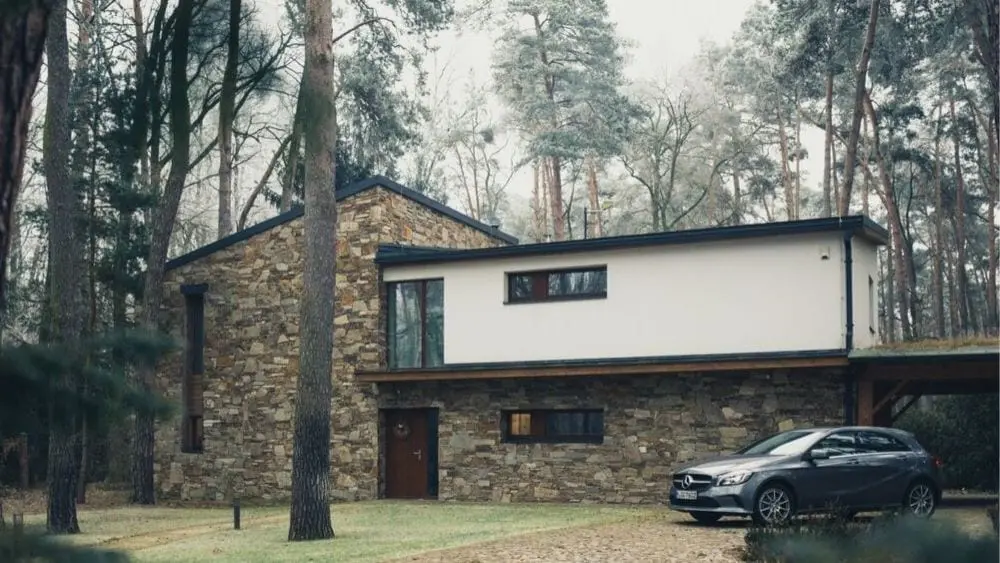
When Sarah McCracken and her husband, Mike, began searching for their first home, they weren’t sure about the location or even the size they wanted. But they were in agreement on one thing: Whichever home they ultimately selected needed to have two stories.
The couple found their dream home in Walpole, Mass., and closed on it in March 2018. It’s about 2,100 square feet, with a basement, formal living room, family room, sun porch, kitchen/dining combination and office. And it has two stories.
“The division of space is nice,” says Sarah, a 29-year-old nonprofit manager. “Having the bedrooms upstairs so they don’t interfere with the living area was what we were looking for. Our parents like to go to bed early when they come to visit, so we can watch TV downstairs and not bother anybody.”
The McCrackens’ thought process is typical of homebuyers today, experts say.
“There is an overwhelming list of factors to consider when buying a house, and these factors vary significantly based on the buyer’s demographic and lifestyle preferences,” says Alina Laguna, broker-associate at RE/MAX Futura in San Francisco. “After all, buyers will be spending many years in their home, and they need to be sure to select something that fits not only their current lifestyle but also their needs into the future.”
The Effect of Age and Price on Floor Plan Preferences
It should come as no surprise that a buyer’s age has a significant effect on their choice of a one- versus two-story home. Many homeowners today plan to age in place, and having a home without stairs makes that easier.
According to What Home Buyers Really Want, 2019 Edition, a report by the National Association of Home Builders, a buyer’s preferred floor plan varies depending on their age. Nationally, 65 percent of buyers of all ages prefer a single-story home, while just 29 percent prefer a two-story model. But factor in age, and those numbers change dramatically.
Just a third of buyers under age 35 (33 percent) prefer a single-story floor plan. The percentage of buyers wanting single-story homes, however, jumps to 76 percent for those ages 55 to 64 and to a whopping 84 percent for those 65 and older.
Those percentages are consistent with what Sunrise, Fla.-based homebuilder GL Homes experiences with its buyers.
GL Homes builds both active-adult homes for those 55 and over as well as family communities for buyers of all ages. In its 55+ communities, GL offers buyers one option: single-story homes. “People at a certain stage of life don’t really want to go up and down stairs,” says Jill DiDonna, a GL Homes senior vice president. “They think about the future and their physical state as they age, and they realize that they don’t need the square footage any more so they always choose a one-story home.”
In its family communities, however, buyers can opt for either a one- or two-story model—and the factor that matters most, particularly for first-time buyers, is price, DiDonna says. “If they’re choosing a one-story, smaller-square-footage house, a lot of it is because of the price point they’re trying to stay within,” she says.
But assuming they can afford it, DiDonna says that buyers with families prefer two-story homes, with a ground-floor master suite to provide parents with privacy.
The Effect of Location on Floor Plan Choice
Sometimes choosing between a one- and two-story home is not a matter of personal preference, but a matter of what’s available. That’s because the number of two-bedroom homes constructed varies based on where you live.
According to a recent NAHB report, 17 percent of single-family homes completed in the Northeast were one story, compared to 43 percent in the South, 53 percent in the Midwest and 41 percent in the West. One factor that plays into these regional differences is the cost of land; in markets where land is scarce or pricey, builders can construct a larger house, with more square footage, on a smaller lot if they build up.
So, supply and demand issues may limit buyer choice in certain markets.
The Effect of Lifestyle on Floor Plan Choice
Certainly, age, price and location play into a buyer’s decision of whether to buy a one- or two-story home. But lifestyle does as well.
Do you want your kids close by, or do you prefer multiple levels for privacy? Do you entertain a lot? If so, you might prefer a two-story home so that the kids can go to bed upstairs without being disturbed by voices downstairs. Are you a neat freak? Then you may prefer to have the kids’ bedrooms upstairs, so guests won’t see any messes.
But single-story homes have advantages as well. “A one-story home is essential for elderly owners or families with small children, so they don’t have to worry about potential safety issues with stairs,” says Justin Potier, an assistant vice president and broker/manager of Carrington Real Estate Services in Long Beach, Calif. “A one-story home is also quicker and safer when exiting in an emergency.”
How to Choose
After evaluating your budget, looking at the available supply of homes and considering your lifestyle, experts suggest one more thing when deciding between a one- and two-story home: Look into the future.
Think ahead—five or 10 years down the road. What will your household look like? Will you have frequent guests from out of town who will stay with you?
“The best thing buyers can do is anticipate their future needs,” DiDonna says. “It’s real hard to buy a home and not have the space you need or to have too much space. So, it’s really important that homebuyers at any stage of life anticipate their needs and think about not only what they need today but also what they’ll need in the future.”

Robyn A. Friedman is an award-winning freelance writer and copywriter who has been covering the real estate and housing industries for over two decades. She writes the “Jumbo Jungle” column for The Wall Street Journal, is a real-estate and personal-finance columnist for City & Shore magazine, covers celebrity real estate for the South Florida Sun-Sentinel and also contributes regularly to Commercial Property Executive, Multi-Housing News and numerous other publications.
 Unique Wine Storage Interior Designers Love
Unique Wine Storage Interior Designers Love